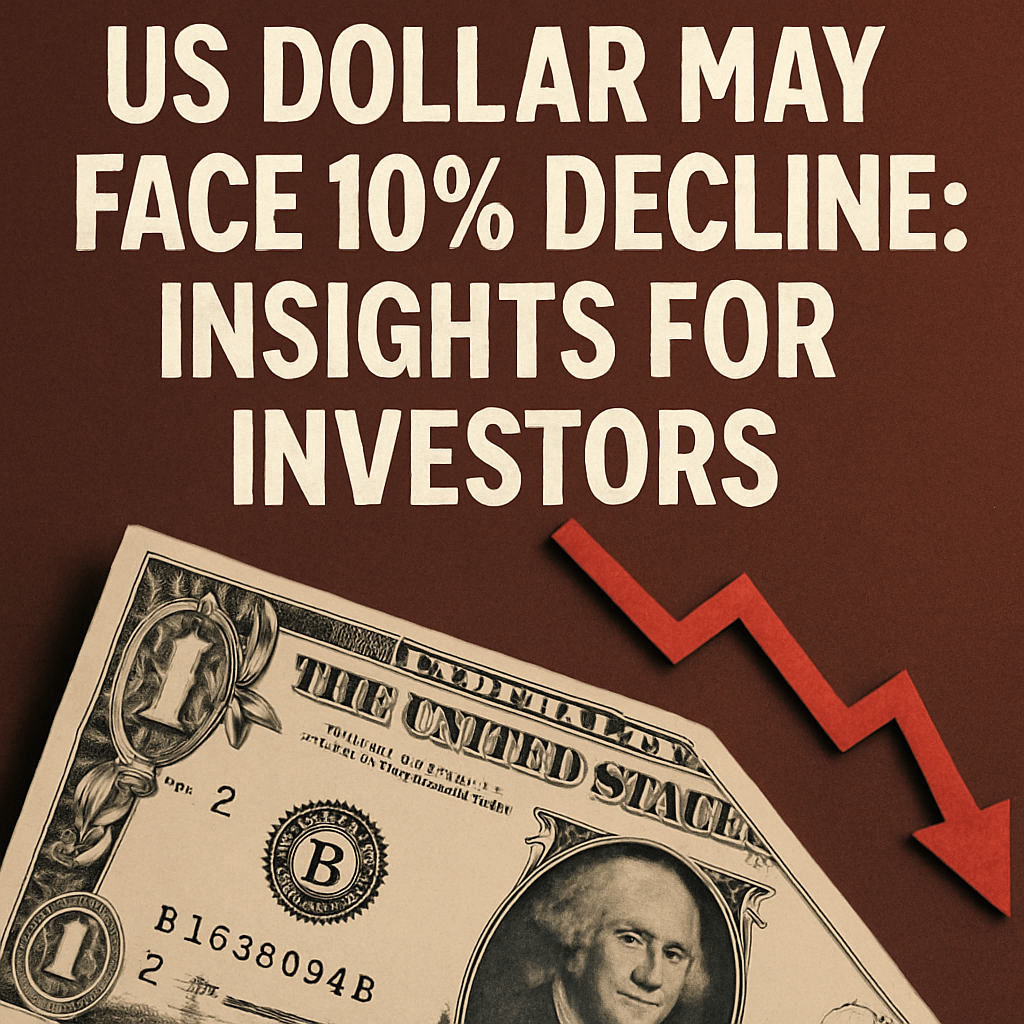US Dollar May Face 10% Decline: Insights for Investors

The US dollar may face a significant depreciation of as much as 10% over the next 12 months, according to analysts at deVere Group, one of the largest independent financial advisory and asset management organizations globally. This assessment coincides with rising forecasts from various leading financial institutions warning of a more profound downturn for the U.S. dollar due to a confluence of economic factors, including slowing growth, aggressive rate cuts, and global trade disruptions.
Current State of the Dollar
The US Dollar Index (DXY), which tracks the performance of the dollar against a basket of major currencies, has already seen a decrease of nearly 10% since its peak in February 2023. Analysts at deVere predict the index could plunge further, potentially reaching levels not observed since the early stages of the pandemic. Such a decline would represent one of the most significant annual reductions in the currency’s value in over ten years.
“Investors need to brace for a pronounced decline in the dollar’s value,” said Nigel Green, CEO of deVere Group.
Factors Influencing the Dollar’s Decline
Several interrelated factors are contributing to this outlook. Primarily, the Federal Reserve’s anticipated interest rate cuts—projected to total as much as 175 basis points over the next year—are expected to compress yields and diminish the dollar’s appeal compared to its peers. This shift in the interest rate landscape is critical; historically, a higher interest rate environment has bolstered the dollar by attracting foreign capital seeking better returns.
“While 10-year Treasury yields remain elevated for now, we believe they’re nearing a peak,” notes Nigel Green. “A sharp descent on the horizon as the Fed pivots more decisively will further exacerbate the dollar’s decline.”
Broader Economic Implications
The potential for a 10% decline in the dollar reflects more than just currency trading; it poses broader implications for the global economy. Green emphasized that waning confidence in the dollar may alter trade dynamics and affect U.S. international standing. “This is a moment of reassessment—not only of U.S. economic resilience but also of the role the dollar plays in the world’s financial architecture,” he stated.
Investor Sentiment and Market Reactions
- Recent data from the Commodity Futures Trading Commission indicate that speculative positioning on the dollar is not particularly bullish, suggesting a heightened likelihood of further declines.
- Meanwhile, a Bloomberg gauge of the dollar has slipped again, continuing a trend of diminishing confidence in U.S.-denominated assets.
Amidst these trends, investors are beginning to pivot towards traditional safe-haven currencies such as the yen, euro, and Swiss franc, which stand to benefit from a declining dollar. Green cautions, “The winners in this shift will be those who position now.” He adds that foreign exchange markets are inherently forward-looking, and many factors that once supported the dollar are becoming sources of volatility and downside risk.
Strategic Response from Companies and Investors
For businesses and investors with international exposure, this anticipated dollar decline is already impacting strategic planning. Exporters and multinational corporations are actively hedging against currency fluctuations, while portfolio managers are reassessing asset allocations toward non-dollar assets and emerging markets that could gain from a weaker dollar.
Green concludes, “The world is watching the US not just for monetary signals but also for stability. When confidence erodes—as it is now—the consequences extend beyond foreign exchange charts. Investors should prepare accordingly.” With these sentiments, the outlook for the dollar over the next year appears challenging, signaling the need for proactive strategies in investment and currency management.
Conclusion
In summary, the potential for a significant decline of the dollar is supported by a range of economic indicators and shifts in market sentiment. As companies and investors evaluate their exposure to currency risks, those who act swiftly may be well-positioned to capitalize on emerging opportunities in this evolving financial landscape.
Source: diyinvestor